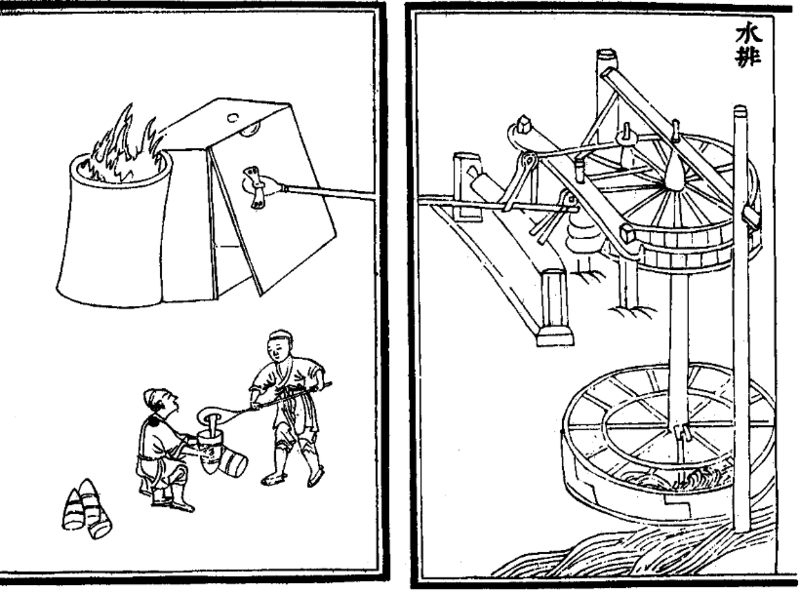 I came across some illustrations, primarily by military strategists Liu Ji and Jiao Yu of the Ming Dynasty. The second waterwheel image comes from the Yuan Dynasty, about 150 years beforehand.
I came across some illustrations, primarily by military strategists Liu Ji and Jiao Yu of the Ming Dynasty. The second waterwheel image comes from the Yuan Dynasty, about 150 years beforehand.I thought this was a great example of the early utilization of panels to create conceptual breaks. Each sectioned part places focus on a specific function or process.
Also, note the rocks/earth drawn in the top image's bottom of the first panel. The lack of continuation of this linework suggests an intentional break in time/place. Particularly interesting is the ordering of the panels; Portraying function, then conveying process and the how.


The last image is a great breakdown of the movement within a singular action. Note the different faces on each soldier, thus solidifying that this is a group of different men, rather than a time lapse of one man.
It's interesting to think that perhaps the artist understood that likely expectation, and hence bothered to differentiate the soldiers faces? Regardless, the artist clearly understood how time lapse and action can be conveyed in a singular image.
I'm of the opinion that this understanding of visual narrative can be largely attributed to a rapid expansion of scientific and technological ingenuity in Medieval China, and the need to accurately portray cause and effect visually. These visual devices were used specifically when describing innovations in weaponry or engineering.
Keep in mind this was also a time of increased trade with Europeans, particularly Spain and the Dutch, undoubtedly affecting the ways visual communication was utilized.

No comments:
Post a Comment